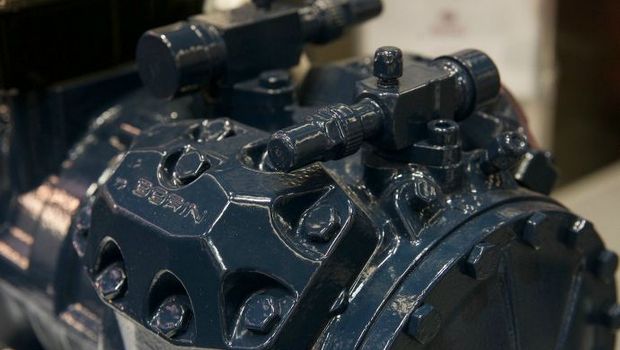Commitment to CO2 driving Dorin to innovate

Dorin is drawing inspiration from the automotive sector in seeking to improve the performance of its CO2 compressors, Giacomo Pisano, the Italian manufacturer’s technical sales manager, said.
“The compressor has been subject to a deep engineering investigation, which ended up in the introduction of many technical solutions arising from the automotive sector,” Pisano said.
With the EU’s F-Gas Regulation compelling end users such as food retailers to adopt alternatives to HFCs, Dorin – which designed its first CO2 compressor in 1996 – sees a bright future for this natural refrigerant, whose environmental impact is zero (GWP=1, ODP=0).
“Dorin has always believed in CO2,” Pisano said. The company’s CO2 compressors now boast over 100 million operating hours since the first model was designed in 1996.
“Instead of adapting the HFC compressor for carbon dioxide applications, as many competitors have done, Dorin decided to invest conspicuous resources in designing a new product specifically for CO2,” Pisano said.
The thermal properties and fluid dynamics of carbon dioxide pose unique challenges compared to the manufacture of HFC-based compressors.
Pisano describes these challenges as the following:
- High thermal stresses (discharge temperature up to 200°C);
- High pressure fields (pressure ratio eight times higher compared to HFC application);
- Short stroke, causing extremely high load on the rod small end, and;
- High miscibility with lubricants, imposing advanced tribology solutions.
“The polytropic efficiency of CO2 causes extremely high discharge temperatures (up to 200°C), not even close to the common values for HFC refrigerants (100°C). Adopting a common automotive solution, the discharge manifold allows a perfect thermal insulation between hot gases from the discharge side and the crank thrust,” Pisano said.
“Thanks to this solution, the compressor can run with a lubricant at an optimal temperature and a perfect residual viscosity. Discharge temperatures are lower and therefore the efficiency increases and the dimensioning of the condenser can take advantage of the lower density of the hot refrigerant gas,” he explained.
The piston/wrist pin is another area of innovation that the company is focusing on. “Thermal loads are particularly intense in CO2 applications. We’re adopting a special kind of piston made of the same material as the cylinder liner. In this way, the thermal expansion has the same behaviour for the piston and the cylinder, avoiding any chance of seizure,” Pisano said.
The connecting rod design was also inspired by automotive solutions. “The viper head connecting rod allows a lower specific load during the compression phase. A lubricating duct, along the connecting rod, allows the oil to lubricate the small end, increasing the reliability of the wrist pin,“ he explained.
The dilution of oil into the refrigerant reduces the residual viscosity of the oil. When the compressor is running, the lubrication is affected by this phenomenon and the reliability of the mechanical elements in motion decreases.
“To overcome this problem, we decided to adopt an automotive solution consisting of multi-layer bushes. The steel matrix of the bush is […] resistant and […] is covered by a hard plastic coating, characterised by an extremely low friction and self-lubricating properties,” Pisano said.
Dorin is also adopting a generously dimensioned oil pump that enables a proper lubrication in every part of the compressor, wrist pin included. “In this way, we’re able to guarantee long-term reliability of our compressors,” Pisano argued.
Sound business case
Pisano is convinced of the business case for CO2. “If you compare a transcritical system for a supermarket to a unit with an HFO or R134a chiller with a glycol circuit for the vending area, frankly I think that today the CO2 system is already cheaper,” he said.
Food retail is not the only sector that Dorin is targeting. Now that larger capacity compressors are already available on the market, Pisano is confident that CO2 can compete with ammonia for large warehouses and other light industrial applications.
